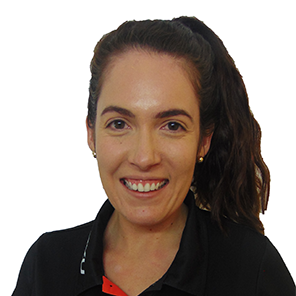The Fitness Zone

What You Need to Know About Training Clients with Eating Disorders
The past few years have seen increased public awareness of eating disorders, such as anorexia, bulimia and others. No longer swept under the carpet, today, the issue is more widely, and frankly, discussed in both online and traditional media.
With eating disorders, compulsive exercise and negative body image frequently co-occurring, it is imperative that personal trainers understand the link between these factors – and the possibility that it may affect some of their clients.
EXCESSIVE FOCUS ON EXERCISE AND ‘HEALTHY’ EATING
There is a common misconception that focusing on healthy eating and exercise is always beneficial. While this mindset can be helpful, and constitutes part of the behavioural shift that many fitness professionals are trying to instigate in their clients, when it is all-consuming and to the exclusion of balance it can become unhealthy.
It is important to understand that many eating disorders are, in fact, due to over-focusing on these aspects of a person’s life, sometimes to make up for a lack of fulfilment in other areas.
IDENTIFYING ROOT CAUSES OF COMPENSATORY BEHAVIOURS
In order for eating disorders to be overcome, focus often needs to be moved away from a single-minded pursuit of nutrition and exercise and towards other aspects of the individual’s life. Areas that require attention may include self-esteem, body image, relationships, career or family.
COMMON DISORDERS
Eating disorders that may benefit from this shift of focus include anorexia nervosa, bulimia nervosa, Binge Eating Disorder and Eating Disorder Not Otherwise Specified (EDNOS). The two latter disorders can be identified more commonly among those suffering from obesity as well as in cases of exercise addiction and overtraining. It is often not realised that these are even categorised as eating disorders, but they share more common ground with anorexia and bulimia that many people may realise.
PUTTING EMOTIONAL HEALTH FIRST
A great many personal training clients have the stated objective of losing weight. Often, our response as personal trainers to someone who is severely overweight or presenting with an unbalanced approach to food and exercise is to encourage them to adopt a ‘healthy eating’ or exercise plan. In doing so, we fail to realise that this can fuel the problem.
In many cases, such as that of severe binge eating, it can actually make the individual feel worse about themselves and therefore less empowered to facilitate the changes that need to take place. For successful weight loss to be achieved – and maintained – some form of emotional support is required in addition to changes in their eating and exercise behaviour.
COUNSELLING AND DIETITIAN REFERRALS
A more productive approach in these instances can be to encourage the individuals to invest time in their emotional health through regular counselling, or to refer them to an Accredited Practicing Dietitian. While this can be a more confrontational approach for all involved, it is important to realise that any form of disordered eating occurs because an individual has some underlying problems that must be dealt with. Once these are addressed, behavioural changes such as eating better and exercising more productively can be worked on.
TIPS
Here are some pointers for managing clients with eating disorders:
- Understand that eating disorders are symptoms of something else that is not working in a person’s life, and that they are developed by the individual as a coping mechanism. If you suspect something is going on, you are probably right, so it is always better to say and do something about it than to ignore it.
- Build trust with the person you suspect may have a disorder, and be sensitive to the fact that you do not know how they feel. Once this relationship has been built, it is easier to have the difficult conversations.
- Approach the client in a setting that is private and comfortable for both of you. Then, simply state that you are concerned about some of their behaviours you have noticed around food and exercise.
- Refer the client elsewhere. Remember that it is not within your scope of practice as a fitness professional to diagnose or offer psychological help. However, you can support the individual by referring them to someone who is qualified to help.
- Work with the client to establish a balanced approach to eating and exercise that is based on enjoyment and health rather than being overly focused on weight loss and appearance.
- Avoid fitness tests that focus on calories, kilograms, body fat or body weight. Instead, focus on the individual’s capabilities, such as energy levels, strength, aerobic capacity, flexibility and simply how they feel. Use personal happiness as an overriding goal for these clients.
For further information about how personal trainers can recognise eating disorders in clients, and help them, click here.
In 2019 the Fitness Australia-endorsed ‘Eating Disorders: Recommendations for the Fitness Industry’ was released, after extensive work by Eleni Psillakis and The InsideOut Institute for Eating Disorders.
The Butterfly Foundation offers support and information relating to eating disorders and body image issues at butterfly.org.au.
Read more articles
Disclaimer: Where Certificate III in Fitness, Cert III/Cert 3, or Fitness Coach is mentioned, it refers to SIS30321 Certificate III in Fitness. Where Certificate IV in Fitness, Cert IV/Cert 4, or Personal Trainer is mentioned, it refers to SIS40221 Certificate IV in Fitness. Where Master Trainer Program™ is mentioned, it refers to Fitness Essentials and SIS40221 Certificate IV in Fitness. Where Master Trainer Plus+ Program™ is mentioned, it refers to SIS30321 Certificate III in Fitness and SIS40221 Certificate IV in Fitness. Where Certificate IV in Massage or Cert IV/Cert 4 is mentioned, it refers to HLT42021 Certificate IV in Massage Therapy. Where Diploma of Remedial Massage is mentioned, it refers to HLT52021 Diploma of Remedial Massage.











